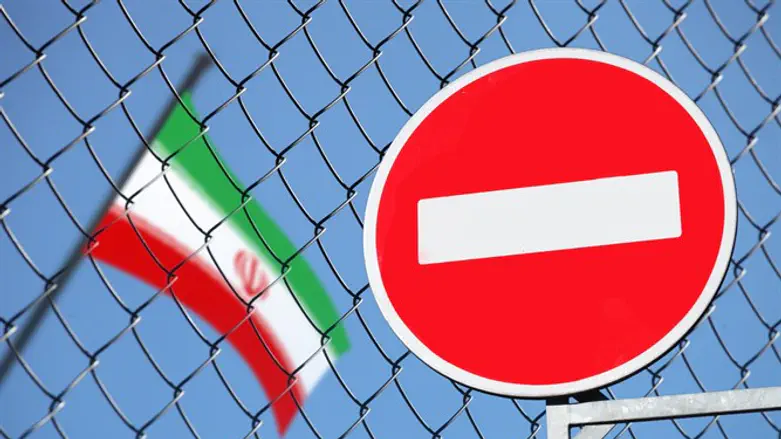
The covert war between Israel and Iran continues unabated, with Israel reportedly now operating inside Iran to thwart Iran’s attempts to develop long-range ballistic missiles that could be used to carry nuclear warheads.
Let’s start with Syria where the Israeli Air Force (IAF) has reportedly carried out at least five major airstrikes against Iran-related targets over the last week alone.
Arab media reported that on Saturday evening and Sunday evening the IAF launched a series of airstrikes against Iranian targets in Syria underlining the stated Israeli policy to oust all Iranian troops from Syria.
“We have moved from a policy of blocking Iran to its ousting from Syria,” former Israeli Defense Minister Naftali Bennett said on April 26th.
During the latest Israeli strike in eastern Syria nine people will killed while the previous bombardment took the lives of 6 Iraqi militia members the London-based Arab paper Asharq Al-Awsat reported.
Then there was a mysterious huge blast in Iran itself which the Islamist regime said was an accident with gas tanks at the military site of Parchin, which has been used by Iran to conduct tests with detonators for nuclear warheads.
In reality, however, the huge explosion took place in a military complex in the Khojir region 20 kilometers east of Tehran. It wasn’t a gas explosion as video images of the blast revealed.
The images showed a giant orange fireball and not a large gray plume of smoke as would have been the case with a gas explosion.
Satellite images taken after the blast, furthermore, proved that the explosion had destroyed two buildings at the military complex in Khojir where Iran is suspected of having conducted nuclear-related work as well.
The Khojir region is home to two Iranian companies that work on solid-propellant missiles and liquid-fuel ballistic missiles. The mountainous area in Khojir also houses the Iranian Aerospace Industries Organization, which is part of Iran’s Defense and Armed Forces Logistics Ministry.
An American weapon expert believes that based on the images she reviewed showing a huge orange fireball, the explosion was in a factory that produces ballistic liquid-fuel missiles.
The Council of National Resistance of Iran, a group of Iranians living in exile mainly in Paris, says that the “Iranian regime is lying and that the massive explosion took place in a section designated for the production of ammunition, in particular, warheads for ballistic missiles.”
Jonathan Schanzer, a former US treasury terror finance specialist, pointed to an article in the Intelligence Times that confirmed that the huge blast took place in the Khojir complex in buildings of the Hemmat Missile Industries Factory.
Schanzer believes that Israel could be behind the explosion that some say was a the result of new cyber attack that could have been launched by the IDF’s famous 8200 cyber unit.
Hemmat Missile Industries Factory is also responsible for the construction of missile factories in Syria, where Iran is converting crude rockets into precision-guided missiles (PGM) in SSM Precision Missile Factories.
Schanzer further believes that Israel decided to attack the PGM threat “at its source” after going after every missile delivery in Syria.
The reason Iran lied over the location of the attack has a lot to do with preserving secrecy over its activities in Khojir where the Islamic Republic is working to develop long-range and even intercontinental ballistic missiles.
This is also the reason that Israel and the US are in favor of extending the arms embargo on Iran that was part of the UN-approved 2015 nuclear deal between Iran and six world powers and that will expire at the end of October 2020.
The US Administration of President Donald J. Trump links the development of long-range ballistic missiles to Iran’s secret nuclear weapons program.
That program has never been abandoned according to former Mossad head Shabtai Shavit, who in a recent interview with Israel’s English language media said the following: ”I am sure that down the road Iran will develop nuclear weapons because Khamenei’s regime sees Iran as a re-emerging Persian Empire that will bring light to the nations.”
The former Mossad chief said that Iran took the decision to develop its own weapons of mass destruction, including nuclear ones, after the Iraq Iran war, when then-Supreme Leader Ayatollah Ruhollah Khomeini sent children with explosives into the battlefield after Iran failed to achieve a victory over Saddam Hussein’s Iraq.
“I have no doubt that Iran is continuing to work today, as we speak, to develop nuclear capabilities. They are doing it clandestinely to avoid provoking the US and the rest of the world,” Shavit said.
The new blow to Iran delivered by Israeli cyberwar experts comes at a time when the Khamenei regime is in huge trouble.
Iran failed to contain the coronavirus crisis and today already more than 62.000 Iranians have died from the COVID-19 virus.
This and the so-called ‘maximum pressure’ campaign by the Trump Administration has brought Iran now to its knees as the economy in the Islamic Republic collapses.
The regime is longer able to pay the wages of government employees while 70 percent of Iran’s more than 80 million citizens is living below the poverty line of $1.90 per day.
The Rial, Iran’s currency, is further collapsing and lost in June more than 14 percent of its value against the US Dollar.
To save the economy the regime ordered Iranians back to work at a moment the Corona crisis was far from being under control and this caused the second wave of COVID-19 cases.
Rampant corruption among regime officials is another reason for the increasing financial and economic crisis in Iran and this could eventually lead to a new uprising that could finish off Khamenei’s regime.